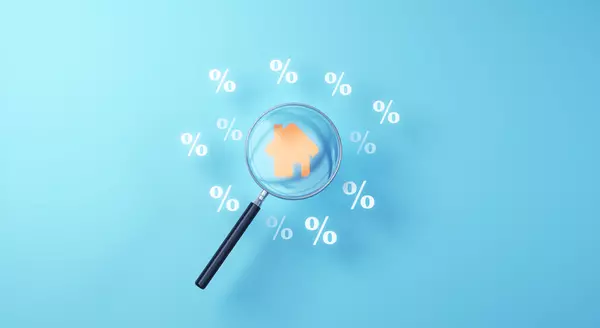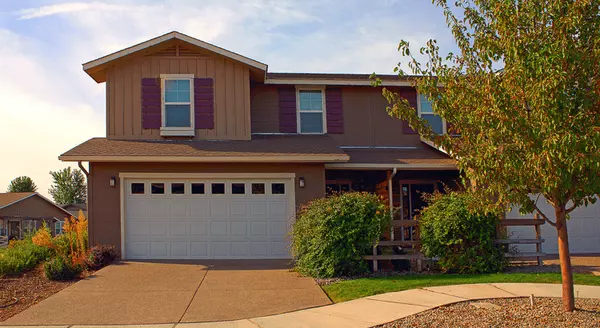

June 2024 Foot Traffic
" data-src="https://cdn.nar.realtor/sites/default/files/styles/wysiwyg_small2/public/2024-06-foot-traffic-sentrilock-home-showings-report-cover-07-23-2024-300w-400h.png?itok=zilgSYnu" class="b-lazy" width="200" height="267" alt="Cover of the June 2024 Foot Traffic NAR Sentrilock Home Showings report" title="Cover of the June 2024 Foot Traffic NAR Sentrilock Home Showings report"> Download PDF Home Showings in the U.S. in June 2024 Showings up 2% Year-over-Year in June June 2024 U.S. showings were up 2% year-over-year, with 782,035 showings, according to data from SentriLock, LLC., a lockbox company. The pace of showing activity has inclined compared to last month, May 2024. SentriLock Cards Increased 3% Year-over-Year Total U.S. SentriLock cards rose3% year-over-year to 234,129. SentriLock cards, comprised of SentriKey® and SentriCard®,allow REALTORS® to access the Sentrilock® lockbox and indicate the number of REALTORS® who conduct the showing. Showings Per Card Decreased to -1% Year-over-Year The number of showings per card reflects the strength of buyer interest per listed property. At a national level, showings per card decreased to -1% year-over-year in June. " data-src="https://cdn.nar.realtor/sites/default/files/styles/inline_paragraph_image/public/2024-06-foot-traffic-us-year-over-year-change-in-home-showings-january-2009-to-june-2024-line-graph-07-23-2024-566w-294h.png?itok=kCty1lb_" class="b-lazy" width="566" height="294" alt="Line graph: U.S. Year-Over-Year Change in Home Showings, January 2009 to June 2024" title="Line graph: U.S. Year-Over-Year Change in Home Showings, January 2009 to June 2024"> Regional Home Showings in June 2024 One of the Four Regions Saw Year-over-Year Showings Increase Two of the four regions saw an increase in showings on a year-over-year basis in June: The Northeast had the biggest gain (34%), followed by the South (8%). The West region was flat (0%). Showings were down in the Midwest (-6%). Year-over-Year SentriLock Cards Decreased in Two of the four Regions Cards were up in the South (10%) and the Northeast (7%) on a year-over-year basis. The West fell (-3%), followed by the Midwest (-1% ), which had the smallest decline. Showings Per Card Increased in Two of the Four Regions on a Year-over-Year Basis Two of the four regions saw year-over-year increases in showings per card in June. The Northeast had the biggest increase(25%),followed by the West (4%). The South fell (2%), followed by the Midwest region, which declined (5%). " data-src="https://cdn.nar.realtor/sites/default/files/styles/inline_paragraph_image/public/2024-06-foot-traffic-regional-year-over-year-change-in-home-showings-us-map-07-23-2024-522w-334h.png?itok=O1icfQGj" class="b-lazy" width="522" height="334" alt="U.S. Map: Regional Year-Over-Year Change in Home Showings June 2024" title="U.S. Map: Regional Year-Over-Year Change in Home Showings June 2024"> Download the full report
Read More

July 2024 NAR Real Estate Forecast Summit: Residential Update
On July 22, 2024, from 12:00 – 1:00 p.m. ET, NAR held a virtual economic and real estate summit that provided an outlook on the changing residential real estate market. The speakers were NAR Chief Economist Lawrence Yun and NAR Deputy Chief Economist Jessica Lautz. a#white-header:hover{color: white; background-color: #35a0ea; display: inline;} " data-src="https://cdn.nar.realtor/sites/default/files/styles/inline_paragraph_image/public/youtube-icon-45w32h.png?itok=CKtHOzk_" class="b-lazy" width="45" height="32" alt="YouTube Play Button Icon"> NAR Videos on YouTube NAR offers additional topics online covering legislation, events, industry news and guides for both NAR members and the public. Visit NAR on YouTube National Association of REALTORS® 25.6K subscribers Open YouTube REALTOR® Party 1.82K subscribers Open YouTube REALTOR® Magazine 3.96K subscribers Open YouTube NAR Meetings 1.85K subscribers Open YouTube Realtors Property Resource® (RPR) 13.4K subscribers Open YouTube HouseLogic 1.46K subscribers Open YouTube First-Time Buyer 3.7K subscribers Open YouTube That’s Who We R (playlist) Open YouTube
Read More

Existing-Home Sales Slipped 5.4% in June; Median Sales Price Jumps to Record High of $426,900
Key Highlights Existing-home sales faded 5.4% in June to a seasonally adjusted annual rate of 3.89 million. Sales also slumped 5.4% from one year ago. The median existing-home sales price bounced 4.1% from June 2023 to $426,900 – the second straight month it reached an all-time high and the twelfth consecutive month of year-over-year price gains. The inventory of unsold existing homes rose 3.1% from the previous month to 1.32 million at the end of June, or the equivalent of 4.1 months' supply at the current monthly sales pace. " data-src="https://www.nar.realtor/sites/default/files/styles/inline_paragraph_image/public/downloadable/2024-06-existing-home-sales-housing-snapshot-infographic-07-23-2024-1000w-1500h.png?itok=_CTEgEof" class="b-lazy" width="1000" height="1501" alt="EHS Housing Snapshot Infographic, June 2024" title="EHS Housing Snapshot Infographic, June 2024"> See and share this infographic. WASHINGTON (July 23, 2024) – Existing-home sales fell in June as the median sales price climbed to the highest price ever recorded for the second consecutive month, according to the National Association of REALTORS®. All four major U.S. regions posted sales declines. Year-over-year, sales waned in the Northeast, Midwest and South but were unchanged in the West. Total existing-home sales1 – completed transactions that include single-family homes, townhomes, condominiums and co-ops – receded 5.4% from May to a seasonally adjusted annual rate of 3.89 million in June. Year-over-year, sales also dropped 5.4% (down from 4.11 million in June 2023). “We're seeing a slow shift from a seller's market to a buyer's market,” said NAR Chief Economist Lawrence Yun. “Homes are sitting on the market a bit longer, and sellers are receiving fewer offers. More buyers are insisting on home inspections and appraisals, and inventory is definitively rising on a national basis.” Total housing inventory2 registered at the end of June was 1.32 million units, up 3.1% from May and 23.4% from one year ago (1.07 million). Unsold inventory sits at a 4.1-month supply at the current sales pace, up from 3.7 months in May and 3.1 months in June 2023. The last time unsold inventory posted a four-month supply was May 2020 (4.5 months). The median existing-home price3 for all housing types in June was $426,900, an all-time high and an increase of 4.1% from one year ago ($410,100). All four U.S. regions registered price gains. “Even as the median home price reached a new record high, further large accelerations are unlikely,” Yun added. “Supply and demand dynamics are nearing a balanced market condition. The months supply of inventory reached its highest level in more than four years.” REALTORS® Confidence Index According to the monthly REALTORS® Confidence Index, properties typically remained on the market for 22 days in June, down from 24 days in May but up from 18 days in June 2023. First-time buyers were responsible for 29% of sales in June, down from 31% in May but up from 27% in June 2023. NAR's 2023 Profile of Home Buyers and Sellers – released in November 20234 – found that the annual share of first-time buyers was 32%. All-cash sales accounted for 28% of transactions in June, unchanged from May and up from 26% one year ago. Individual investors or second-home buyers, who make up many cash sales, purchased 16% of homes in June, identical to May and down from 18% in June 2023. Distressed sales5 – foreclosures and short sales – represented 2% of sales in June, unchanged from last month and the previous year. Mortgage Rates According to Freddie Mac, the 30-year fixed-rate mortgage averaged 6.77% as of July 18. That's down from 6.89% one week ago and 6.78% one year ago. Single-family and Condo/Co-op Sales Single-family home sales retracted to a seasonally adjusted annual rate of 3.52 million in June, down 5.1% from 3.71 million in May and 4.3% from the prior year. The median existing single-family home price was $432,700 in June, up 4.1% from June 2023. Existing condominium and co-op sales tumbled 7.5% in June to a seasonally adjusted annual rate of 370,000 units, down 14% from one year ago (430,000 units). The median existing condo price was $371,700 in June, up 2.6% from the previous year ($362,200). Regional Breakdown Existing-home sales in the Northeast in June withdrew 2.1% from May to an annual rate of 470,000, a decline of 6% from June 2023. The median price in the Northeast was $521,500, up 9.7% from one year earlier. In the Midwest, existing-home sales decreased 8% from one month ago to an annual rate of 920,000 in June, down 6.1% from the prior year. The median price in the Midwest was $327,100, up 5.5% from June 2023. Existing-home sales in the South slid 5.9% from May to an annual rate of 1.76 million in June, down 6.9% from one year before. The median price in the South was $373,000, up 1.7% from last year. In the West, existing-home sales declined 2.6% in June to an annual rate of 740,000, identical to a year ago. The median price in the West was $629,800, up 3.5% from June 2023. About the National Association of REALTORS® The National Association of REALTORS® is America's largest trade association, representing 1.5 million members involved in all aspects of the residential and commercial real estate industries. The term REALTOR® is a registered collective membership mark that identifies a real estate professional who is a member of the National Association of REALTORS® and subscribes to its strict Code of Ethics. # # # For local information, please contact the local association of REALTORS® for data from local multiple listing services (MLS). Local MLS data is the most accurate source of sales and price information in specific areas, although there may be differences in reporting methodology. NOTE: NAR's Pending Home Sales Index for June is scheduled for release on July 31, and Existing-Home Sales for July will be released on August 22. Release times are 10 a.m. Eastern. 1 Existing-home sales, which include single-family, townhomes, condominiums and co-ops, are based on transaction closings from Multiple Listing Services. Changes in sales trends outside of MLSs are not captured in the monthly series. NAR benchmarks home sales periodically using other sources to assess overall home sales trends, including sales not reported by MLSs. Existing-home sales, based on closings, differ from the U.S. Census Bureau's series on new single-family home sales, which are based on contracts or the acceptance of a deposit. Because of these differences, it is not uncommon for each series to move in different directions in the same month. In addition, existing-home sales, which account for more than 90% of total home sales, are based on a much larger data sample – about 40% of multiple listing service data each month – and typically are not subject to large prior-month revisions. The annual rate for a particular month represents what the total number of actual sales for a year would be if the relative pace for that month were maintained for 12 consecutive months. Seasonally adjusted annual rates are used in reporting monthly data to factor out seasonal variations in resale activity. For example, home sales volume is normally higher in the summer than in the winter, primarily because of differences in the weather and family buying patterns. However, seasonal factors cannot compensate for abnormal weather patterns. Single-family data collection began monthly in 1968, while condo data collection began quarterly in 1981; the series were combined in 1999 when monthly collection of condo data began. Prior to this period, single-family homes accounted for more than nine out of 10 purchases. Historic comparisons for total home sales prior to 1999 are based on monthly single-family sales, combined with the corresponding quarterly sales rate for condos. 2 Total inventory and month's supply data are available back through 1999, while single-family inventory and month's supply are available back to 1982 (prior to 1999, single-family sales accounted for more than 90% of transactions and condos were measured only on a quarterly basis). 3 The median price is where half sold for more and half sold for less; medians are more typical of market conditions than average prices, which are skewed higher by a relatively small share of upper-end transactions. The only valid comparisons for median prices are with the same period a year earlier due to seasonality in buying patterns. Month-to-month comparisons do not compensate for seasonal changes, especially for the timing of family buying patterns. Changes in the composition of sales can distort median price data. Year-ago median and mean prices sometimes are revised in an automated process if additional data is received. The national median condo/co-op price often is higher than the median single-family home price because condos are concentrated in higher-cost housing markets. However, in a given area, single-family homes typically sell for more than condos as seen in NAR's quarterly metro area price reports. 4 Survey results represent owner-occupants and differ from separately reported monthly findings from NAR's REALTORS® Confidence Index, which include all types of buyers. The annual study only represents primary residence purchases, and does not include investor and vacation home buyers. Results include both new and existing homes. 5 Distressed sales (foreclosures and short sales), days on market, first-time buyers, all-cash transactions and investors are from a monthly survey for the NAR's REALTORS® Confidence Index, posted at nar.realtor.
Read More
Recent Posts











